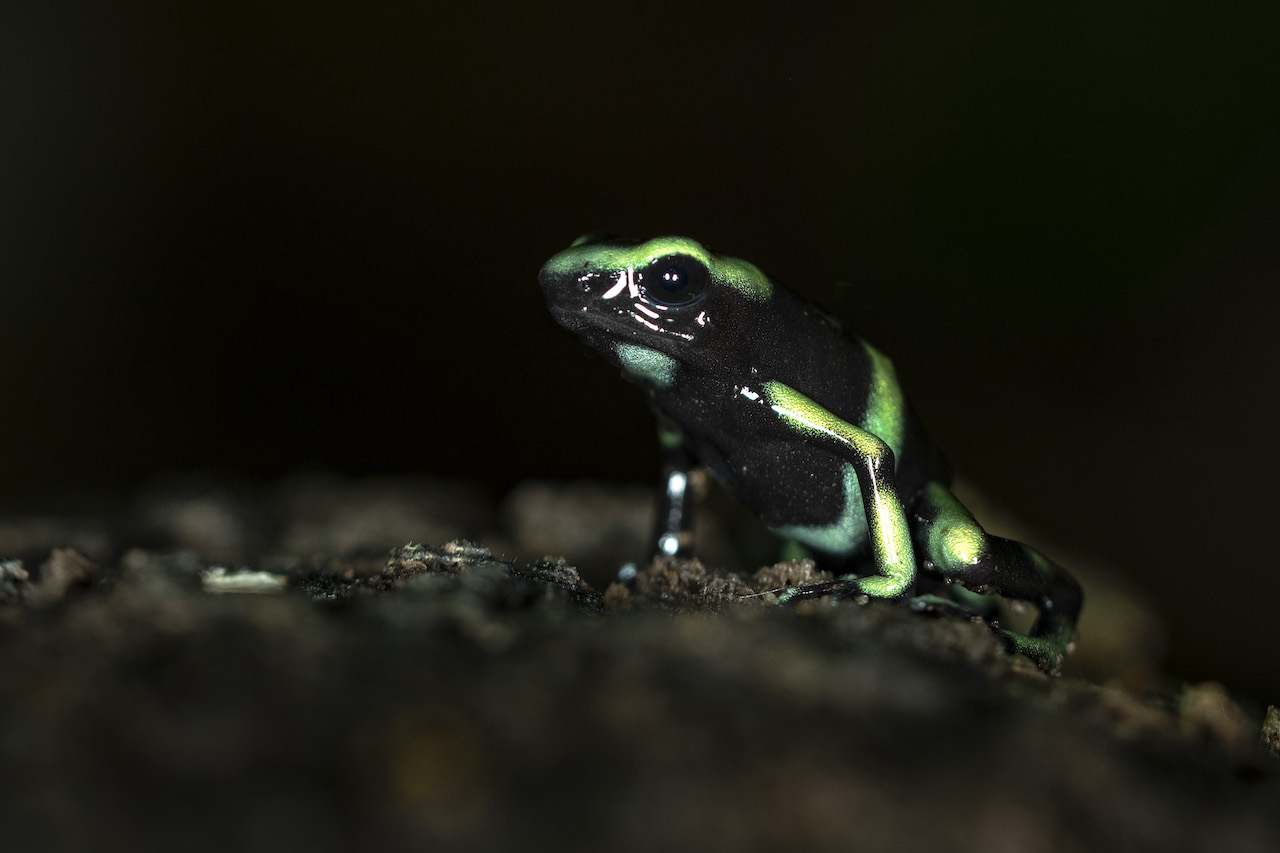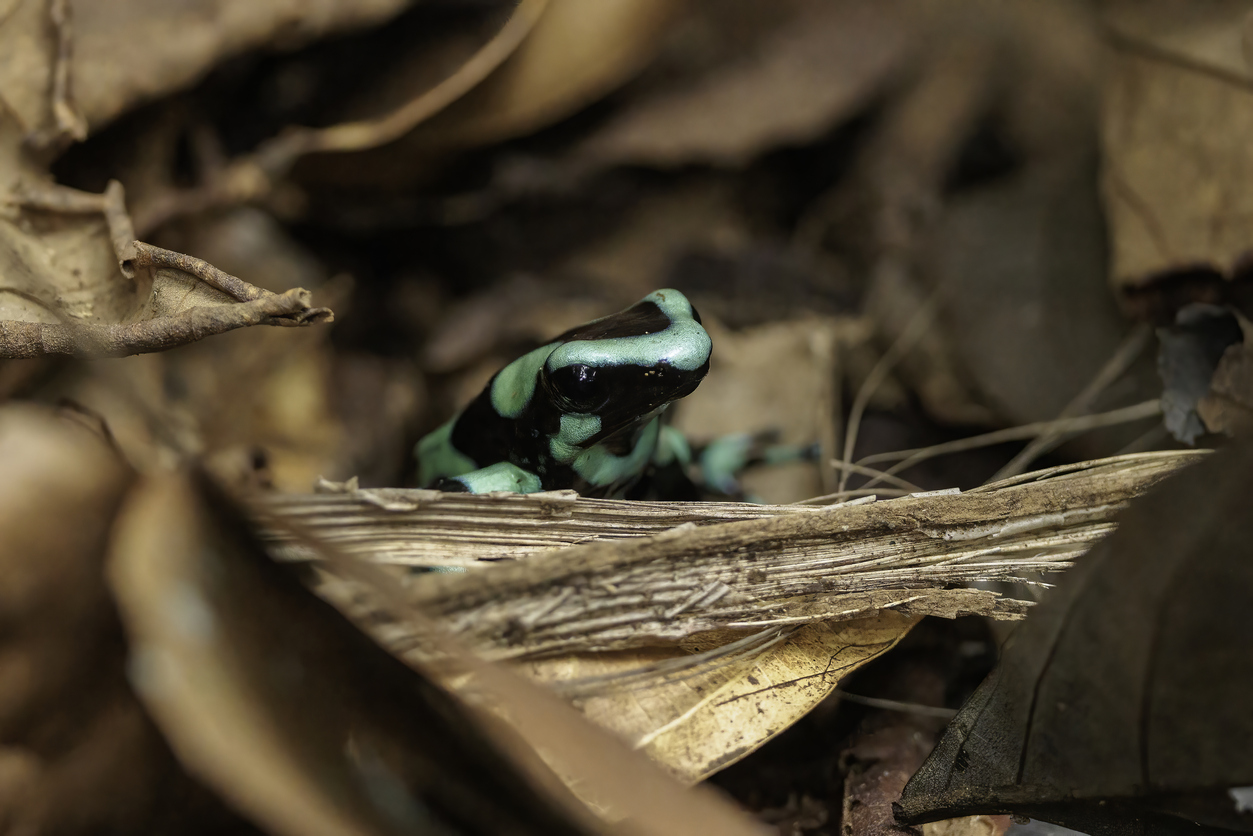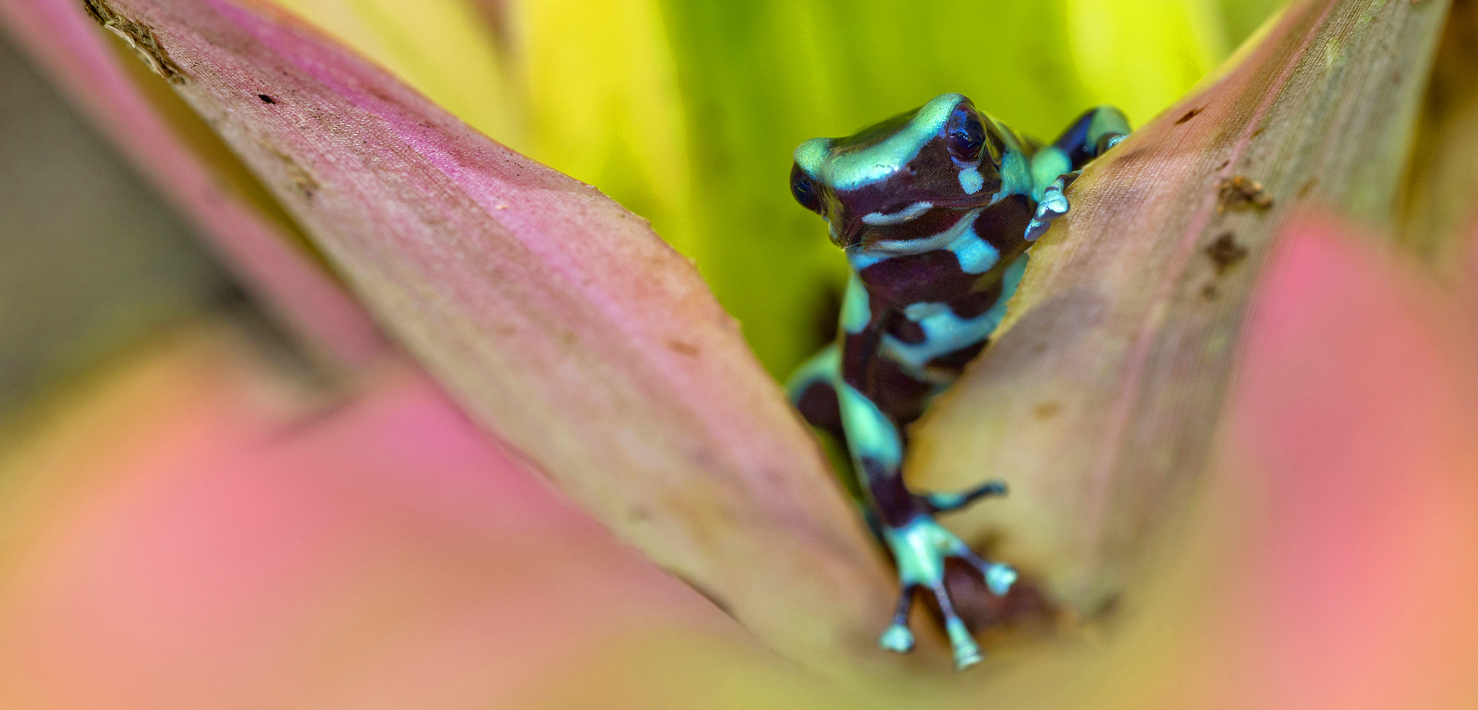What is the most common Poison-Dart Frog in Carara National Park?

Carara is well known because of its famous diversity, birders love this place because of its avian fauna, however on the ground it is easy and common to observe a little and beautiful creature that reminds us we are in the rainforest, we mean frogs, in this specific case we will working on the information about the following specie.
Green and Black Poison-Dart Frog.
- Family: Dendrobatidae
- Subfamily: Dendrobatinae
- Genus: Dendrobates
Description.
These species can be identified by their calligraphic brilliant green markings on a black background on their dorsal side (Caldwell and Summers 2003). Ventrally, they are marbled or spotted with yellow, blue, or green on dark background (Guyer and Donnelly 2005). Among populations there is variation in both hue (ranging from white to blue-green) and pattern (from thick stripes to dots) (Caldwell and Summers 2003). Dendrobates auratus has a smooth upper surface with a head that is relatively long. The snout truncates to slightly rounded (Savage 2002). Dendrobates auratus is the largest poison-dart frog in Costa Rica, with adult females ranging from 27.0-42.0 mm and adult males ranging from 25.0-39.5 mm (Leenders 2001).

Distribution and Habitat of the poison-dart frog
- Colombia, Costa Rica, Nicaragua, Panamá
This species is native to Central America, from the Caribbean slopes of southern Nicaragua to extreme eastern Panama, and on the Pacific slopes from the Osa Peninsula, Costa Rica to Colombia (Guyer and Donnelly 2005). It lives in lowlands, primarily rainforest (Caldwell and Summers 2003). It is a shy species, found deep in the forest interior (Leenders 2001).
In 1932, it was introduced to Oahu, Hawaii, as a means for mosquito control, and continues to occur there (McKeown 1978, 1996).
Life History, Abundance, Activity, and Special Behaviors of the poison-dart frog.

These frogs forage during the day (Guyer and Donnelly 2005). They move by a series of hops, stopping briefly and hopping again when disturbed. They are excellent climbers with individuals climbing to 45 m above the ground (Savage 2002).
Males are territorial at high population densities but may not be at low population densities (Caldwell and Summers 2003). The male call is a high-pitched, insect-like buzz sounding like «cheez-cheez-cheez» (Leenders 2001). The call averages 3.5 kHz in frequency, and can last from two to four seconds followed by a five-second pause (Savage 2002). Males can mate with many females and care for offspring of different females simultaneously (Caldwell and Summers 2003). Females court the males and wrestle other females and chase them from their territories (Savage 2002). This behavior increases male reproductive success but puts survival success of offspring in jeopardy, since females do not defend their territories (Caldwell and Summers 2003). A single male can mate with up to six females (Savage 2002). After being selected by the females, the males then lead the females to the nest site made from leaf litter and the females lay four to six eggs there (Guyer and Donnelly 2005). The male visits the eggs periodically over the incubation period to shed water, remove fungus, and rotate the eggs. After the eggs hatch, the tadpoles crawl up on the male’s back (Savage 2002). The male then transports the tadpoles to small pools of water, usually found in tree holes (Caldwell and Summers 2003). If some eggs hatch earlier than others, the tadpoles that are born first may practice cannibalism by eating the smaller tadpoles.
The tadpoles’ diet consists of algae, detritus, protozoans, insect larvae, and each other (Leenders 2001). Tadpoles are moderate-sized and can reach 30 mm (Savage, 2002). The adults’ diets consist mainly of tiny ants and mites but they also prey on beetles, flies, and springtails (Caldwell and Summers 2003). They are known to have a life-span of eight years in captivity but it is much lower in the wild (Leenders 2001).
Trends and Threats
This species is not threatened (Caldwell and Summers 2003).
